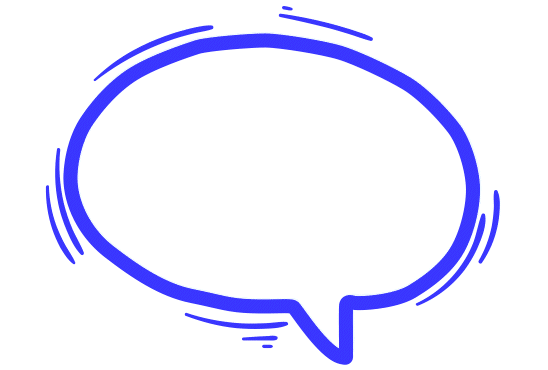
Custom UX/UI Design That Drives Growth
We create visually stunning and user-centric designs that not only deliver a “wow” effect, but also drive real business results, from higher conversions to stronger user engagement.

We create visually stunning and user-centric designs that not only deliver a “wow” effect, but also drive real business results, from higher conversions to stronger user engagement.
OUR DESIGN SERVICES
UX Audit & Research
We evaluate your current product to identify usability issues and pain points. Through user behavior analysis, heatmaps, and data-backed insights, we uncover opportunities to improve UX.
Visual Concept
From mood boards to style explorations, we craft visual concepts that reflect your brand personality and resonate with your target audience.
Interactive Prototyping
Bring your ideas to life with clickable prototypes that feel like the real thing. Test flows, validate features early, and gather actionable feedback before development begins.
Usability Testing
We conduct hands-on testing to uncover friction points and usability issues, ensuring your product is intuitive and enjoyable from day one.
Design System
We build scalable design systems that ensure visual consistency across your entire product. Everything is documented and ready for seamless collaboration.
Re-engineering, UX/UI Design & AI-Powered Tool for a Real Estate Platform
We crafted a clean, intuitive interface with optimized user flows for seamless navigation across property data, analytics, and client tools. A refined color palette, modern typography, and custom iconography work together to create a clear, cohesive, and visually engaging interface.
A Web Platform and Website for a Shipping Brokerage Company
Developed a clean, minimal web platform and website for a shipping brokerage company featuring role-specific UI that simplifies complex maritime workflows. The design ensures consistency across web and mobile, delivering an intuitive and tailored user experience.
Social Mobile Application Re-engineering and Cloud Migration
Designed to transcend virtual boundaries, the application serves as a facilitator for meaningful interactions and real-life engagements within communities.
AI-Powered Document Analysis Tool for an Insurance Leader
A global insurance company approached us with a clear objective: streamline their document analysis and knowledge management workflows.

In Design we trust
HOW WE CREATE IMPACTFUL DESIGNS
We start by diving deep into understanding your users, business objectives, and market landscape. This includes interviews, surveys, and competitor analysis to identify pain points, opportunities, and user expectations.
Next, we organize the content and define clear user flows. By mapping out the structure and navigation paths, we create an intuitive and logical foundation that makes the product easy to use and navigate.
We create wireframes to visualize layouts and interactions without distractions. If needed, we build interactive prototypes to test usability and validate key user journeys before moving to the final design.
Our designers craft the visual language of your product, focusing on aesthetics, branding, and accessibility. We develop a comprehensive UI kit including color schemes, typography, components, and guidelines to ensure consistency and scalability.
To ensure our design meets real user needs, we conduct usability testing sessions and gather feedback. This iterative step helps us refine the design, fix usability issues, and enhance the overall experience.
Once the design is finalized, we stay closely involved during implementation to support the dev team, clarify design logic, and ensure the final product aligns perfectly with the intended user experience.

Bohdan Dionisiadis
Art Director
It’s surprisingly easy to overlook the true power of good design. That’s the tricky part: with poor UX, the problem is invisible, but its impact is very real. Great design, however, is a silent ambassador, balancing beauty and functionality. Our mission is to weave these elements together seamlessly, so your product not only looks incredible but feels effortless to use.
Let’s create something extraordinary together!
HOW DESIGN BOOSTS YOUR BUSINESS
Bad UX hides your value. We streamline every interaction, removing friction, focusing attention, and making actions obvious, so more visitors convert into loyal customers.
Confusing layouts drive users away. Our intuitive navigation and clear visual hierarchy guide them naturally toward the actions that matter most to your business.
We build responsive, accessible designs that look and work great on any device, ensuring you don’t lose users (or revenue) due to poor usability or lack of inclusivity.
An outdated look makes your brand feel irrelevant. We bring your digital presence up to speed with sleek, modern visuals that reflect your business's true value and leave a lasting impression.

WHY CHOOSE OTAKOYI?

We don’t just make things look good, we design with purpose. Every pixel serves your business goals, driving engagement, conversion, and growth.

We’re not afraid to push boundaries, but we always deliver on time. Expect fearless creativity backed by clear processes and proven results.

No handoff headaches here. With in-house development teams, your designs are built exactly as envisioned — fast, smooth, and pixel-perfect.

Our talented designers team delivered 200+ projects across industries, building a reputation for reliability, quality, and creative excellence.










Frequently Asked Questions

We design responsive corporate websites, web applications, mobile apps, admin panels, dashboards, eCommerce interfaces and much more. We also cover branding, graphic design, illustrations, promo videos, and other design needs — from UX audits to complete product design.

CONTACT US
The key to a successful project is a strong business idea backed by real market need, a solid tech solution, and a clear go-to-market plan.
